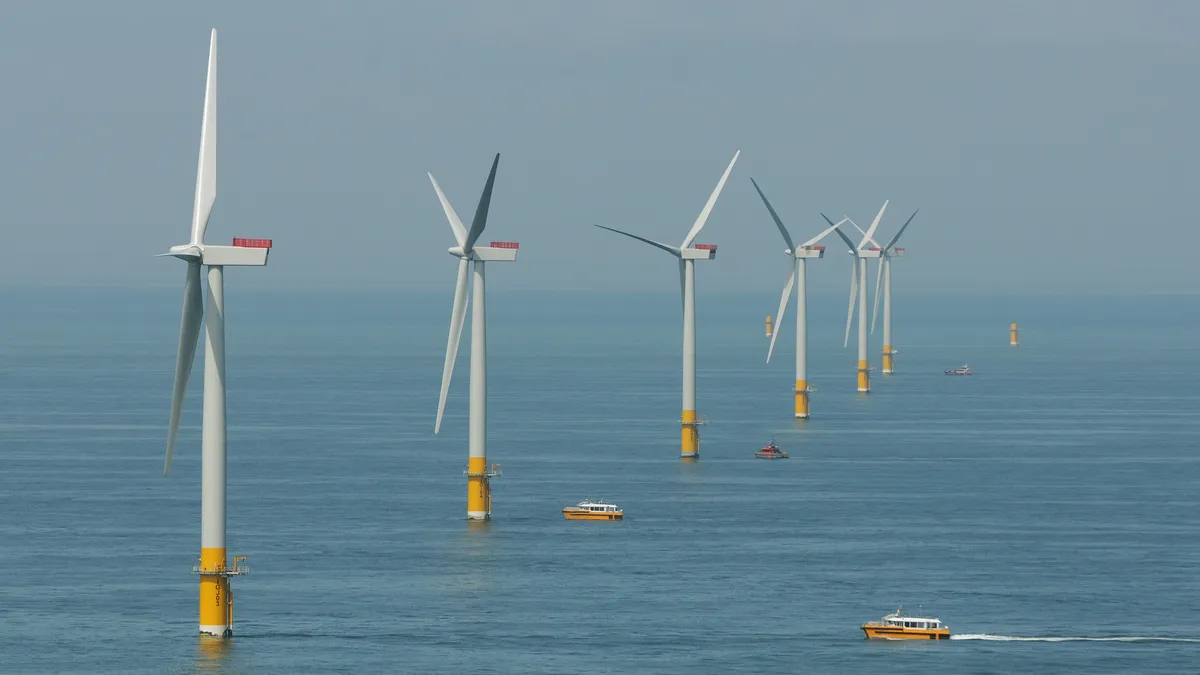Dive Brief:
-
Although the recent legislation has available billions of dollars for transmission updates, convincing private developers and financiers to adopt the most efficient grid technologies could still prove challenging, federal officials said during a Feb. 22 session at the Floating Offshore Wind Summit.
-
Newer technologies like high-voltage direct current transmission lines could make better use of limited interconnection opportunities, but offshore wind developers are still proposing radial lines, according to Jigar Shah, director of the Loan Programs Office at the Department of Energy.
-
The DOE’s loan office aims to provide financing for transmission and other offshore-related projects like ships and ports that may not be attractive to private investors, Shah said.
Dive Insight:
There’s no shortage of places to spend the tens of billions of dollars allocated under the Biden administration to transmission and related infrastructure projects, federal officials said last week. But directing the funds to the best potential applications may prove more challenging, they noted.
Incentives in private markets tend to push investors and private developers to think in terms of a single project, Shah said. That can lead project developers to default to installing radial lines instead of adopting newer ideas such as mesh-style networks of high-voltage direct current lines, which could accommodate as much as 7,000 MW with a single interconnection point, Shah said.
In other areas, thinking in terms of single projects could stop development altogether, Shah said. Offshore wind development will require the use of specialized ships that can’t always be paid off over the course of a single project, even with 25-30 year loan terms. This will require creative solutions that the DOE’s loan office is working to provide, he said.
“Even when you look at 30 GW, the full rent payments that people might make for those ships [to build 30 GW of offshore wind] doesn’t repay the cost of the ships,” he said. “So we have to make some assumptions that the ships can be used for other purposes, or taken to Brazil to do the next set of projects.”
The Department of Transportation, which has received independent funding not directly tied to offshore wind development to modernize the nation’s ports and related infrastructure, is currently working to streamline permitting processes and to coordinate with the DOE about needed financing solutions, according to Maeve Bartlett, senior counsel in the Office of General Counsel at the Department of Transportation.
Political turnover could also become an issue, according to Maria Robinson, director of DOE’s Grid Deployment Office, because most transmission and port upgrades cannot be completed in the span of a single political administration. Meanwhile, Congress and FERC are focused on permitting reform.














